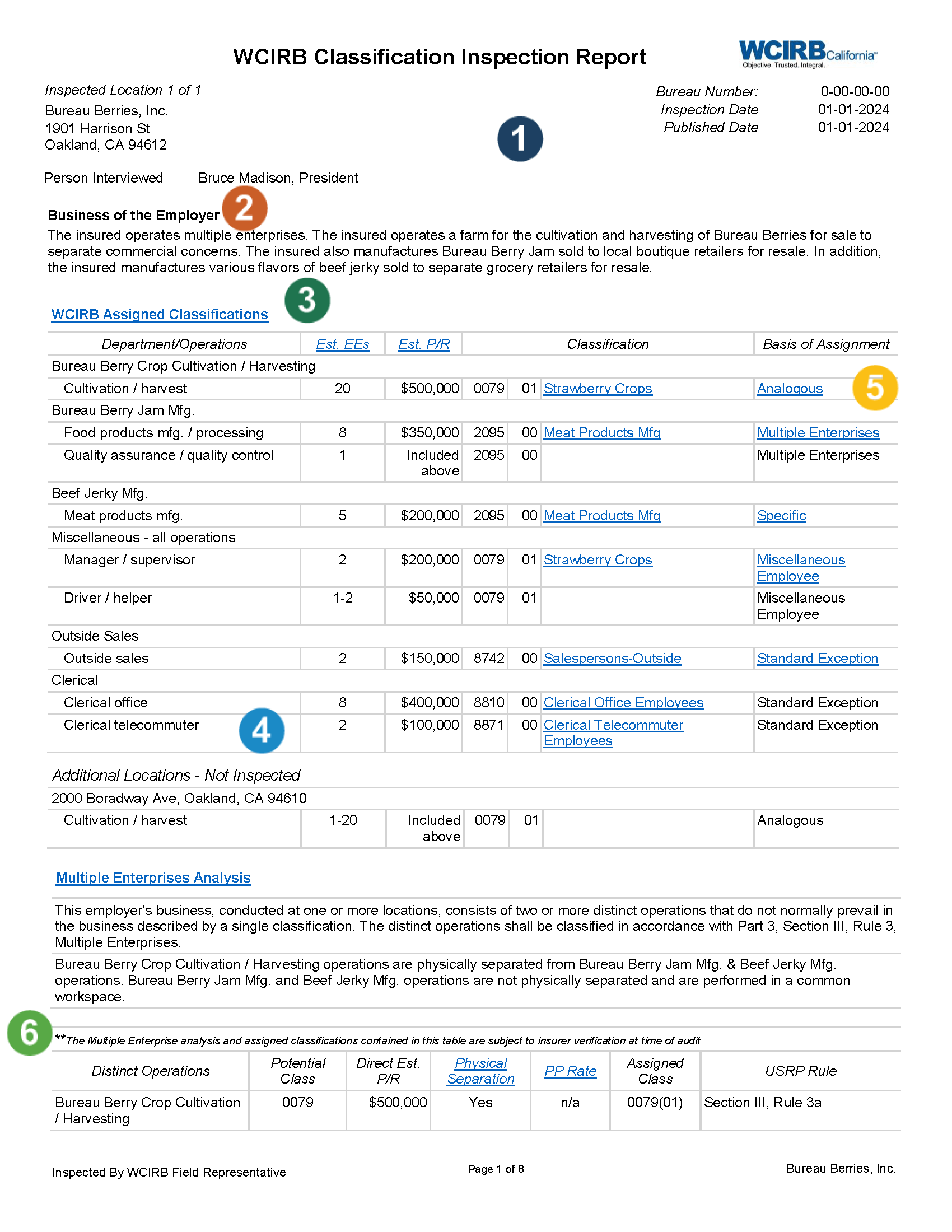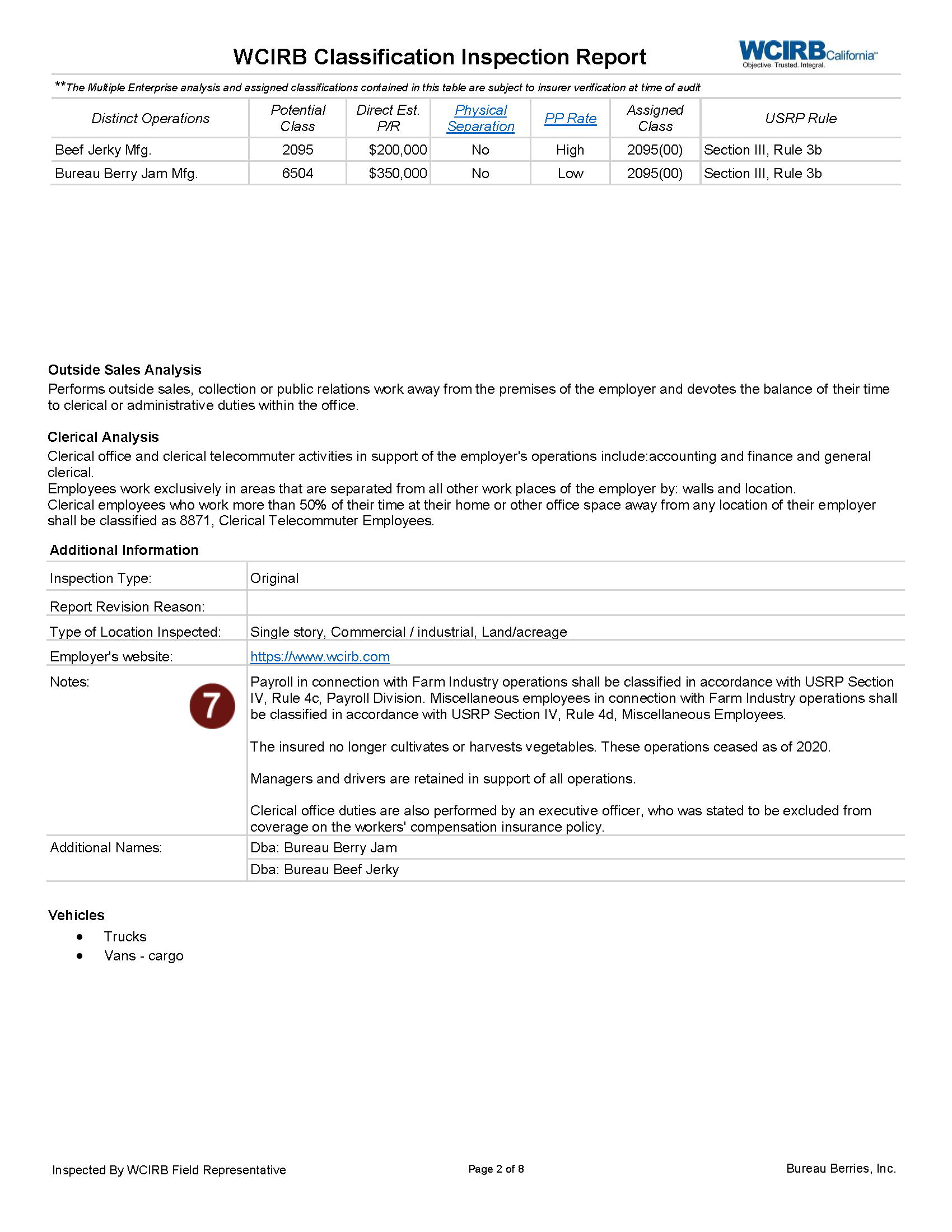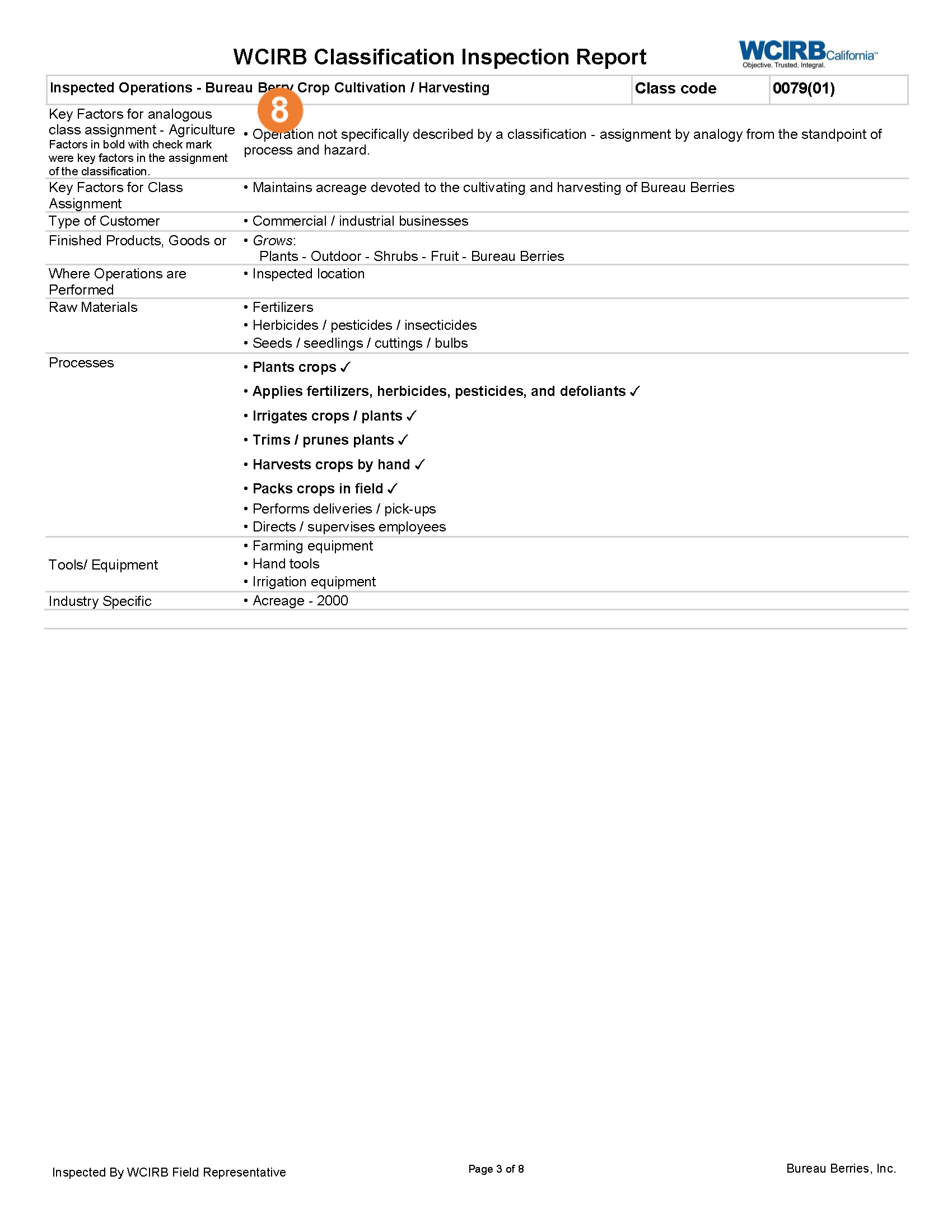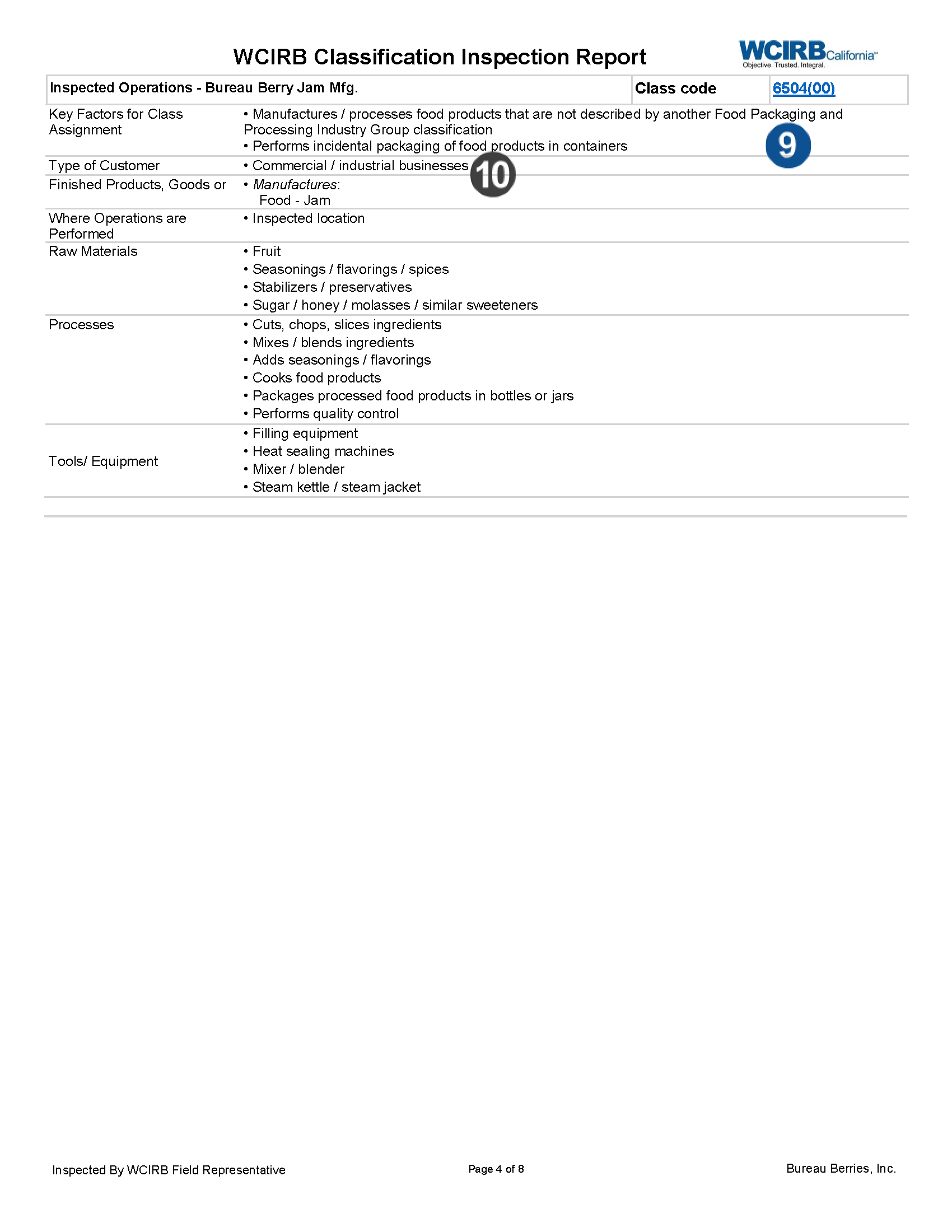The WCIRB collects and validates classification data for all California policyholders. This data is critical to ensuring that policyholders engaged in common industries are similarly classified. It is also key to the publication of accurate experience modifications and the use of the data for ratemaking.
As part of this effort, the WCIRB’s team of Field Representatives conducts on-site reviews at policyholders’ business locations to gather a detailed description of the operations and to verify the classifications that apply to their business. In some cases, the inspection information may be obtained remotely through a telephone interview or virtually using an online viewing app. Based on this review, the Field Representative prepares a Classification Inspection Report (seen in detail below) that is sent to both the policyholder and their current insurer. Learn more about inspections.
Key features of the WCIRB Classification Inspection Report include:
- A modern, easy-to-read approach that clearly highlights all essential information and data
- Clickable links that lead straight to the applicable provisions of the California Workers’ Compensation Uniform Statistical Reporting Plan—1995 (USRP), including complete phraseologies and footnotes for all assigned classifications
- A list of all the key factors that are the basis for the policyholder’s classification assignment
- A detailed analysis of the application of certain classification procedures, including multiple enterprises, stores and assignments by analogy
- A table- and data-driven structure allowing the WCIRB flexibility to update the Report as required to ensure the capture of all information needed to accurately describe California’s evolving industries
- The ability to email copies of the Inspection Report to policyholders and insurers
As a reminder, insurers can search in WCIRB Connect for all Classification Inspection Reports for their policyholders as well as refine their search by a number of attributes, including:
- Date issued
- Assigned classification(s)
- Industry group
- Geographical region
- Three-digit ZIP code
Results include all reports published during the past 10 years and are confined to reports issued to the requesting insurer.
Below is a detailed overview of the WCIRB’s freshly redesigned Inspection Report. Hover your mouse over each number for additional information.
The Inspection Report in Detail
Executive Summary
An at-a-glance summary of the Report’s key findings including: a summary of the business operations conducted at the inspected location; a breakdown of employee activities, estimated employee count and total estimated payroll by department; assigned classifications; the basis for the classification assignment; an overview of any clerical office or outside sales activities; pertinent and helpful notes; any additional locations with similar operations; and, if appropriate, an analysis of the Multiple Enterprises Rule.
Business of the Policyholder
A brief description of what the policyholder does at the inspected location. (Subsequent pages provide a detailed breakdown of all operations.)
Embedded Links
Clicking on any blue text takes the user to reference material included at the end of the Report. These include complete classification phraseologies and footnotes from the USRP. Click on the blue links in the sample report to see this functionality in action.
Table of Assigned Classifications
A breakdown by department or operations of estimated payroll and estimated number of employees, the applicable classifications, and the basis of the assignment.
Basis of Assignment
The Basis of Assignment column identifies the rule in the USRP that is the basis for the classification assignment. Applicable values include Specific (meaning the operations are specifically described by the assigned classification); Analogous (meaning the assignment was made based upon an analysis of process and hazard), Standard Exception, Miscellaneous Employee, General Inclusion and General Exclusion.
Multiple Enterprises Analysis
If the Report includes operations that meet the USRP’s definition of “Multiple Enterprises,” this table breaks down the assignment based on a variety of factors considered at the time of the audit, including physical separation, integral activities performed by employees or departments and the relative pure premium rates. This analysis is specifically directed by the USRP in the Multiple Enterprises Rule. (The analysis and assigned classifications in this table are subject to insurer verification at the time of the audit.)
Additional Information
This section provides a variety of additional information including physical description of the location inspected, the policyholder’s website address, additional named insureds and any pertinent notes about the business.
Assignment by Analogy
This section is used whenever the WCIRB determines there is no classification that specifically describes an inspected operation and therefore the operation must be assigned to a classification that is most analogous from the standpoint of process and hazard.
Key Factors for Class Assignment
For each separately classifiable operation, the report lists the specific factors – taken directly from the USRP’s definition of the classification – that led to the classification assignment.
Additional Key Data Points
This section includes detailed data collected during the inspection that is relevant to the classified operation. Information provided includes type of customers; raw materials; processes; finished products, goods or services; and tools and equipment.
References from the USRP (cont'd)
This section includes rules from the USRP that are specifically related to the assigned classifications listed in the Inspection Report.
References from the USRP
This section includes rules from the USRP that are specifically related to the assigned classifications listed in the Inspection Report.
References from the USRP (cont'd)
This section includes rules from the USRP that are specifically related to the assigned classifications listed in the Inspection Report.
References from the USRP (cont'd)
This section includes rules from the USRP that are specifically related to the assigned classifications listed in the Inspection Report.




